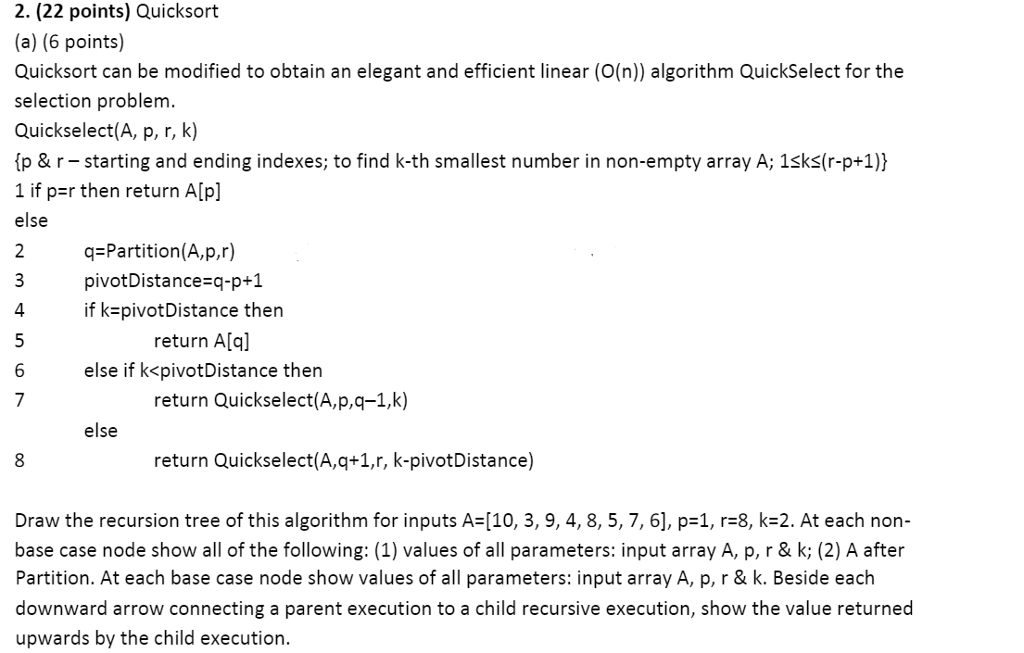Answered step by step
Verified Expert Solution
Question
1 Approved Answer
Draw the recursion tree of this algorithm for inputs A-10, 3, 9, 4, 8, 5, 7, 6], p-1, r 8, k 2. At each non-
Draw the recursion tree of this algorithm for inputs A-10, 3, 9, 4, 8, 5, 7, 6], p-1, r 8, k 2. At each non- base case node show all of the following: (1) values of all parameters: input array A, p, r & k; (2) A after Partition. At each base case node show values of all parameters: input array A, p, r & k. Beside each downward arrow connecting a parent execution to a child recursive execution, show the value returned upwards by the child execution

Step by Step Solution
There are 3 Steps involved in it
Step: 1

Get Instant Access to Expert-Tailored Solutions
See step-by-step solutions with expert insights and AI powered tools for academic success
Step: 2

Step: 3

Ace Your Homework with AI
Get the answers you need in no time with our AI-driven, step-by-step assistance
Get Started


